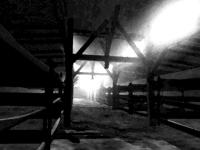

|
|||||||||||||||||||

|
Historically, it has been common for organized groups to come up with a coded language in order to speak secretly or delicately about matters which they do not necessarily wish to have understood publicly. AI is interested in how, in the historical past, these coded terms were used to mask terrible activities and truths from the greater population as well as from other authorities. These code words, in fact, were instrumental in the perpetual self-denial of the groups and governments of their wrongdoing. 'Special Treatment' or ‘Sonderbehandlung’ was the term commonly used by the bureaucracy and agents of Hitler's Third Reich in German-occupied Europe to describe the program of relocation and imprisonment of Jewish inhabitants in the concentration camps. Our work has taken the form of an archetypal 'camp', a partial yet extended interpretation of the Aushwitz-Birkenau concentration camp in Poland between its establishment in 1940 and its liberation in 1945. While it is not our intent to reconstruct an historical model of this place in virtual reality, details of the original camp structures and architectural forms have been carefully researched to provide the blueprint for our representation. We are sensitive to the ongoing debates regarding the actual Birkenau site and whether it should be preserved by its museum foundation for future generations to experience or whether it should be allowed to decay and pass back into the land. In either case, we do not wish to attempt to design a virtual “substitute” for the real place.
| ||||||||||||||||||
|
|||||||||||||||||||
| “Special Treatment” was made in collaboration with (art)n laboratory, Chicago, IL. | |||||||||||||||||||